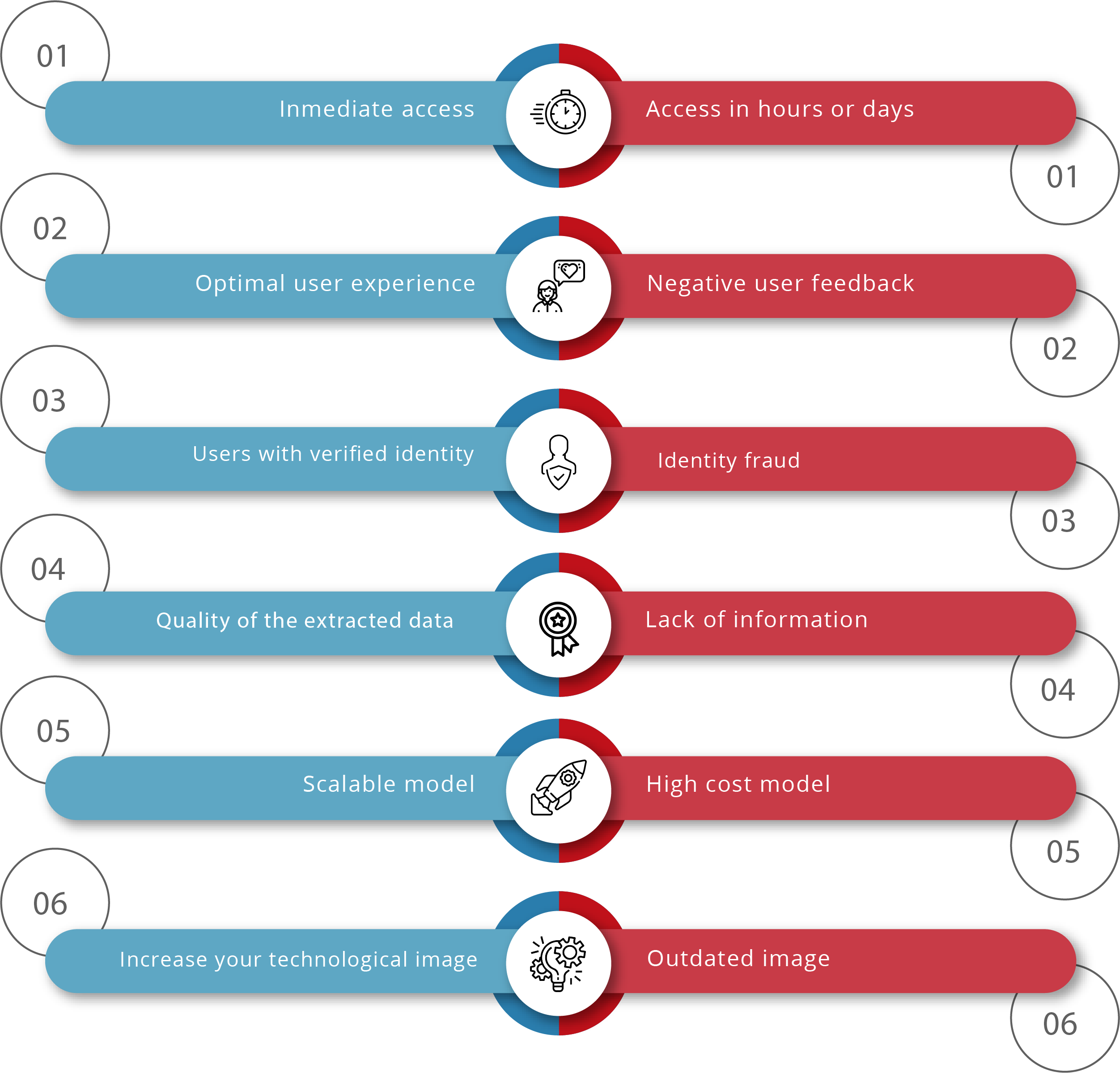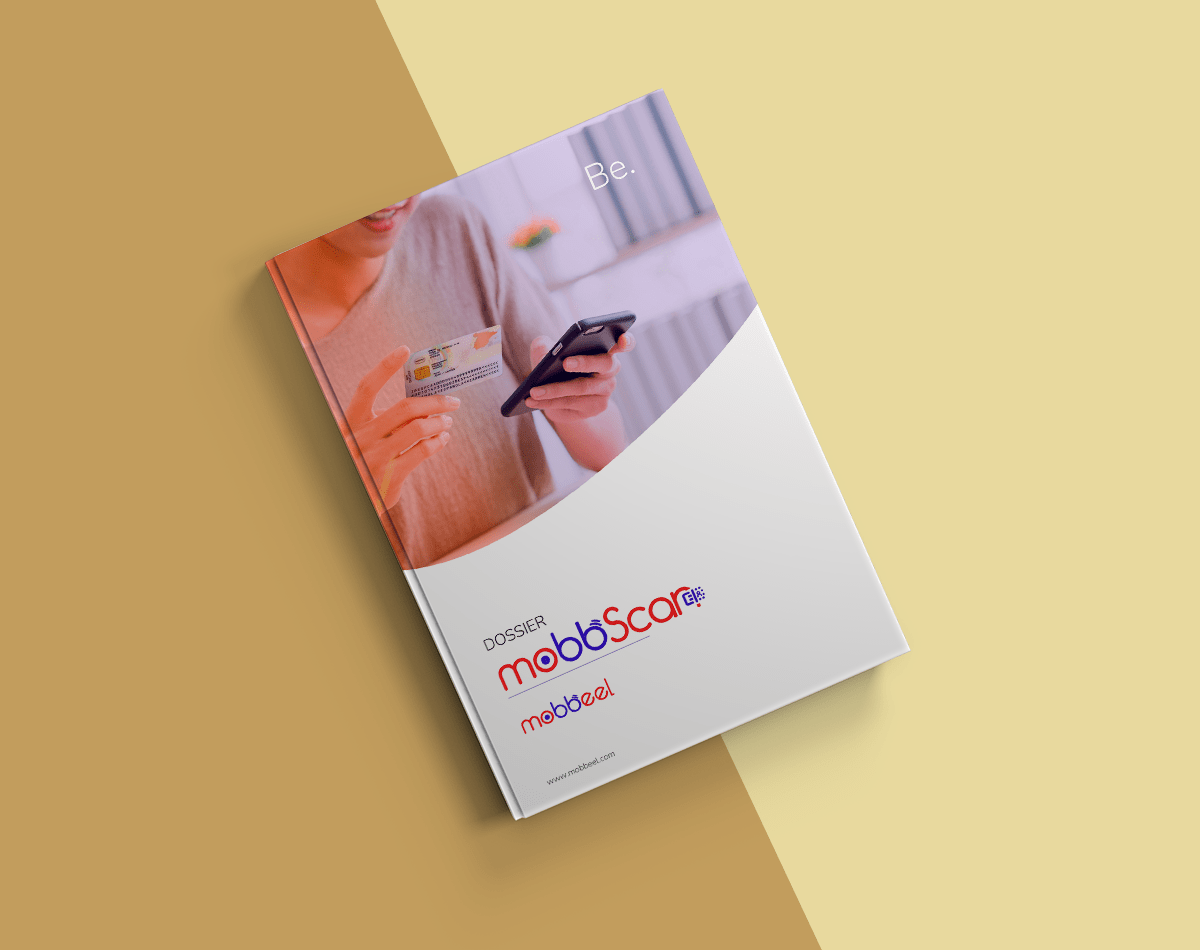User sign-up is a critical point for any company from any industry. After all, it is the way we present ourselves and the moment when we activate our new customers.
Therefore, in such a competitive and dynamic environment as the present one, we must avoid any friction that could hinder the registration process being done correctly and, if possible, with a user experience that offers your new customers a wow moment.
Banks, insurance companies, telcos, hotels and retail are some examples of traditional sectors that are embracing digitalisation to enable remote processes that avoid travel and physical contact, reduce costs and create scalable models through technologies such as artificial intelligence.
Traditional Registration vs Digital Onboarding
Old-fashioned user registration
The user sign-up process in some industries where verifying the identity of the new customer is a major issue has traditionally been done in person with a valid ID document.
When trying to remove face-to-face verification, some industries have digitised part of the registration process, but some steps are still cumbersome:
- filling in countless form fields,
- asking for photos of identity documents,
- and even of the user holding his or her ID card or a piece of paper with the date and a written message
- or sending contracts by post to be returned signed.
Moreover, by not delegating the user verification process to technology, it is necessary to manually review this information, resulting in a process that can take hours or even days before the end user enjoys the service.
Digital Onboarding
Digital onboarding is the process of registering and identifying new users online, ensuring that they have access to all the company’s services and products in a quick, simple way while being integrated into the company’s CRM or database.
Depending on the provider (and believe us, we can help you a lot with this), technologies and user experience may vary. For this reason, and without generalising, here are 6 reasons why it is worth adopting a 100% digital check-in / onboarding model:

6 benefits of embracing digital onboarding / KYC
1. Give your users immediate access to your product or services.
Depending on the industry and the type of product, many registration processes need to meet certain legal requirements, which require companies to identify their customers, necessitating them to present official identity documentation such as a driver’s licence, passport or ID card.
Companies that have not yet joined the digital transformation (asking you to go to an office to verify your identity, or to send the documentation by post for later verification) or those that have digitised part of their processes but still delegate the verification process to people (you send photos of your document to the registry and agents verify them later), can take hours or even days to register a new user, causing many of their potential customers to give up and look for an alternative.
In contrast, other companies automate the identity verification process during digital onboarding allowing users to take advantage of their services after finishing the sign-up.
KYC technologies scan the user’s identity document, both from mobile devices and in a web environment, extract key information and validate its authenticity and even the identity of the person.
![]() Immediacy rules our lives and your customers want to be able to enjoy your services here and now. Automating the verification process during sign-up will allow you to activate that user’s account in real time.
Immediacy rules our lives and your customers want to be able to enjoy your services here and now. Automating the verification process during sign-up will allow you to activate that user’s account in real time.
If I arrive at a station and I download a Car Sharing or Car Rental app and the company takes several hours to check the documentation and validate my account: What use is that app to me if I need to use the vehicle at that very moment?
![]() Immediacy rules our lives and your customers want to be able to enjoy your services here and now. Automating the verification process during sign-up will allow you to activate that user’s account in real time.
Immediacy rules our lives and your customers want to be able to enjoy your services here and now. Automating the verification process during sign-up will allow you to activate that user’s account in real time.
If I arrive at a station and I download a Car Sharing or Car Rental app and the company takes several hours to check the documentation and validate my account: What use is that app to me if I need to use the vehicle at that very moment?
2. Improve the user experience (UX) by automatically filling in form fields
Traditional registration processes are not free of forms full of fields and data to be filled in, making the customer’s first contact with the platform not as positive as it could be, especially if the registration is made on a mobile device where the input of characters is trickier.
New digital onboarding technologies can simplify data entry by extracting the data from the identity document and automatically filling in the relevant fields, turning a process that takes minutes into a process of seconds.
Moreover, nothing adds more value to the user experience than enabling a customer to meet its needs at the right time, without waiting minutes, hours or days.
3. Verify the real identity of the user who is signing up
Verifying that the user who registers is who they claim to be is essential to avoid identity fraud. In many cases, users who want to fraudulently use your services create an account by using other people’s IDs or forged documents.
In many industries, the user is only asked for an ID document during registration to prove their identity, but what would happen if a minor borrowed their father’s ID card to gain access to an online gambling platform?
Whether for security reasons or because it is required by law, many companies are beginning to incorporate technologies to prevent fraud, analysing the veracity of the ID document presented and adding a facial recognition step to verify that the person presenting the ID document is the same person who appears in the photo on the document, i.e. its legitimate owner.
4. Provide quality in the extraction of data
It is very common when users send images of their ID documents (photos, photocopies, scans) to send images that are out of focus, blurred or with fields covered by their fingers.
Even if the option to take a manual photo is incorporated in the registration process, the quality of the image is not controlled, delegating all the responsibility to the user, who may take the photo with reflections that prevent reading parts of the document, with shadows or directly of another object other than an ID card.
Some solutions, such as MobbScan, offer a robust and secure system that allows the integration of a capture SDK to ensure that the image being scanned is a real document. During the capture process, messages are displayed to interact with the user and get an image with the best possible quality. This whole process is done automatically, so that the responsibility is no longer delegated to the user.
This step is critical because the rest of the identity verification process depends on obtaining a good quality image.
5. Create a scalable model vs. high cost model
Having staff to manually review all the records to verify that the information provided by the customer is legitimate entails recurring costs for the company that will increase exponentially as the company grows.
In addition, manual screening in many cases is not as accurate as automated screening since trained staff would be needed to detect forgeries of identity documents from anywhere in the world.
A model based on technology and not on people allows the automation of processes and makes the business scalable by reducing costs.
6. Improve the technological image of your company
Make technology a differential value compared to your competition, removing the perception that the customer may have of some more traditional industries.
In this way, the technological image that customers have of you will become another fundamental factor for them to choose your services.
Conclussion
These are some of the reasons that should encourage you to make the leap to an automated digital onboarding process and if you have not yet considered it, you should reflect on whether your registration model offers the experience and usability that your customers deserve, allowing you to grow in a sustainable way.
If you are interested in our technology do not hesitate to contact us, and if you liked the article, share it and add value to your followers!

I’m a Software Engineer with a passion for Marketing, Communication, and helping companies expand internationally—areas I’m currently focused on as CMO at Mobbeel. I’m a mix of many things, some good, some not so much… perfectly imperfect.

PRODUCT BROCHURE
Discover our identity verification solution
Verify your customers’ identities in seconds through ID document scanning and validation, and facial biometric matching with liveness detection.




